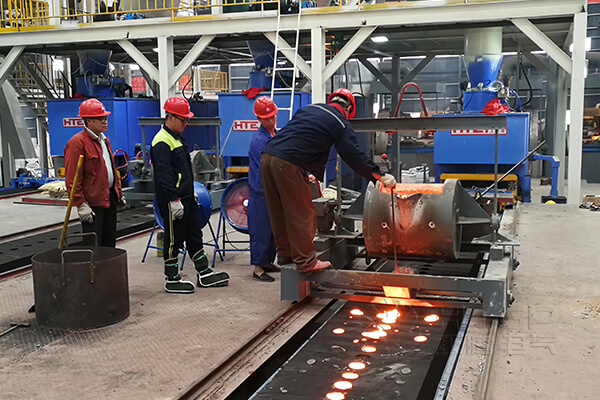How to Select a Steel Casting Line?
Selecting a steel casting line requires careful consideration of various factors to ensure that the chosen equipment meets your specific requirements. Here are some key steps to guide you in the selection process.

Determine Casting Requirements
Begin by clearly defining your casting requirements. Consider factors such as the size and complexity of the castings, the desired material properties, the required production volume, and any specific industry standards or regulations that need to be met. This will help you understand the capabilities and specifications needed for the casting line.
Assess Production Capacity
Evaluate your anticipated production volume and frequency. Determine the capacity and throughput required from the casting line to meet your production targets. Consider factors such as cycle time, number of molds produced per hour, and overall production efficiency.
Evaluate Casting Techniques
Familiarize yourself with various casting techniques available in the market, such as sand casting, investment casting, or continuous casting. Each technique has its advantages and limitations, and selecting the most suitable one depends on factors such as casting complexity, material properties, and cost considerations.
Research Equipment Suppliers
Conduct thorough research and identify reputable suppliers or manufacturers of steel casting lines. Look for suppliers with a proven track record, experience in the industry, and a history of delivering reliable and high-quality equipment. Seek recommendations from industry peers, attend trade shows, and explore online resources to gather information about potential suppliers.
Consider Equipment Specifications
Review the specifications of the steel casting lines offered by different suppliers. Assess factors such as the size of the casting machine, the type and capacity of the melting furnace, the available molding options, cooling systems, automation capabilities, and quality control features. Ensure that the equipment aligns with your casting requirements and can accommodate future growth or changes in production needs.
Evaluate Energy Efficiency
Energy consumption is a significant consideration in steel casting. Evaluate the energy efficiency of the equipment offered by different suppliers. Look for features such as energy recovery systems, optimized heating and cooling processes, and energy management technologies to minimize energy consumption and reduce operating costs.
Consider Automation and Digital Integration
Assess the level of automation and digital integration offered by the casting line. Modern casting lines can incorporate advanced automation, robotics, and digital technologies such as data analytics, machine learning, and IoT. These features can enhance productivity, quality control, and overall operational efficiency.
Assess After-Sales Support
Evaluate the after-sales support provided by the equipment supplier. Consider factors such as warranty, availability of spare parts, technical assistance, and maintenance services. A reliable supplier should offer comprehensive support to ensure the smooth operation and longevity of the casting line.
Request Proposals and Compare
Reach out to shortlisted suppliers and request detailed proposals that include equipment specifications, pricing, delivery timeline, and support services. Compare the proposals based on factors such as technical fit, overall cost-effectiveness, supplier reputation, and customer references.
Conduct Site Visits and References
If possible, visit the facilities of the shortlisted suppliers to observe their equipment in operation and gauge their manufacturing capabilities. Additionally, ask for references from their existing customers to gain insights into their satisfaction levels and the overall performance of the equipment.
By following these steps and conducting thorough due diligence, you can select a steel casting line that best suits your specific casting requirements, production volume, and long-term business goals.

